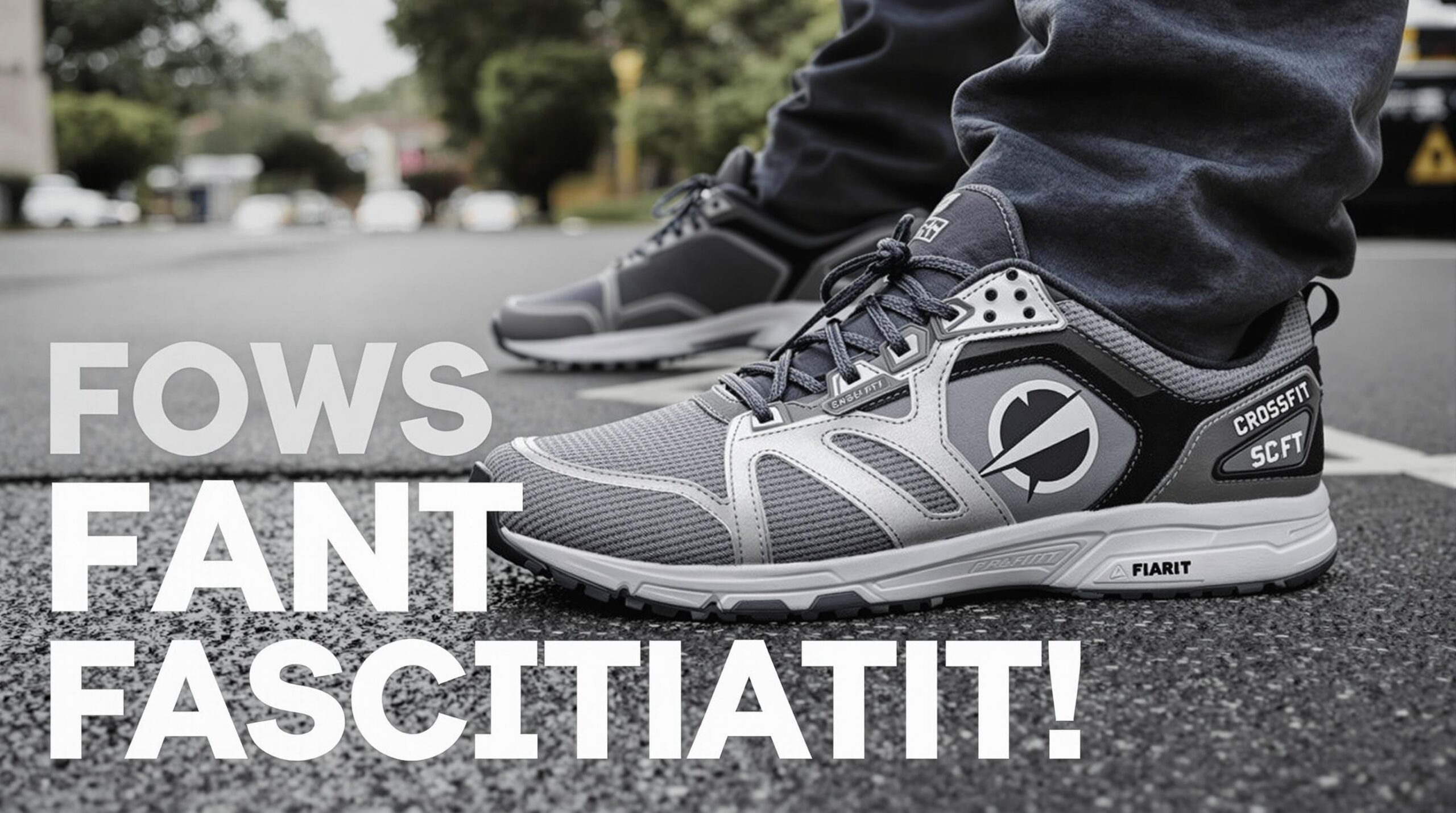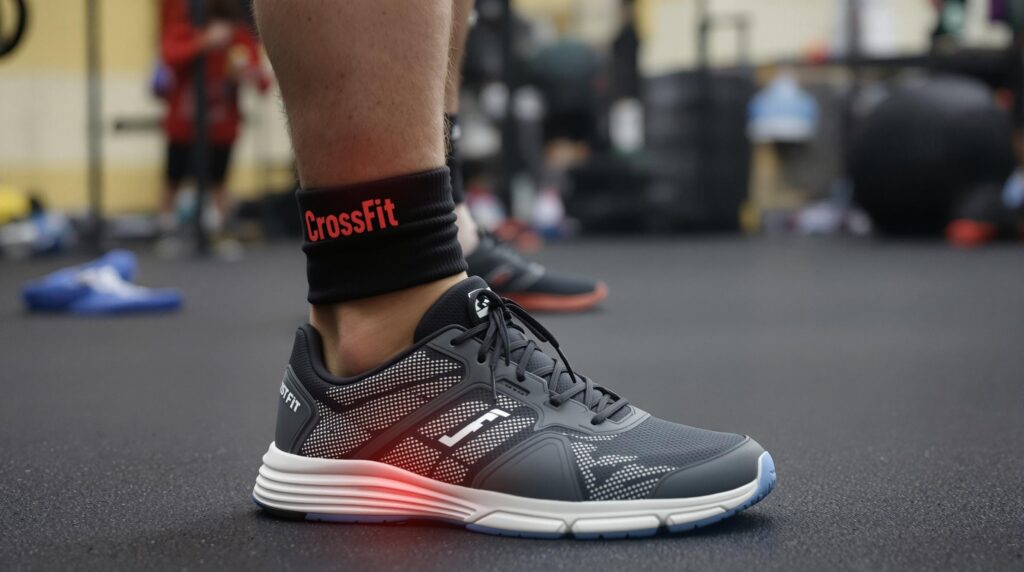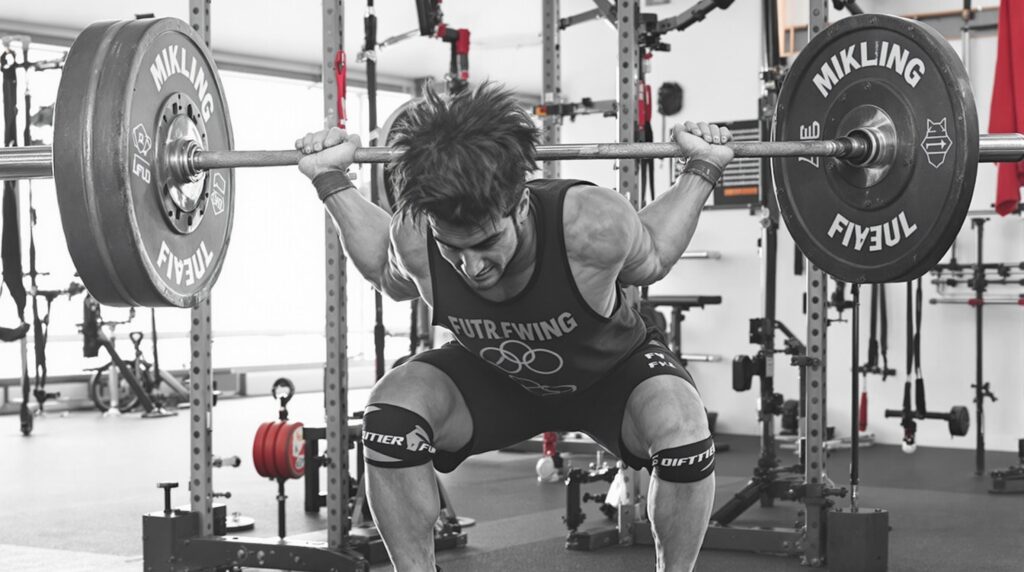Finding the best CrossFit shoes for plantar fasciitis requires balancing pain relief with performance needs. The right footwear can make all the difference between cutting your WOD short due to heel pain or crushing personal records while protecting your feet from further injury.
Key Takeaways
- Shoes with stack heights exceeding 35mm provide optimal impact absorption for plantar fasciitis sufferers
- An 8-12mm heel-to-toe drop helps redistribute pressure away from the painful heel area
- Look for shoes with a torsional rigidity rating of 4/5 to limit excessive foot motion during dynamic CrossFit movements
- The Brooks Adrenaline GTS 24 and Hoka Bondi 9 scored highest in lab tests for stability and cushioning
- Different CrossFit activities require specialized shoe features—matching your footwear to your training style is crucial
Understanding Plantar Fasciitis and CrossFit Footwear Needs
Plantar fasciitis occurs when the thick band of tissue connecting your heel to your toes becomes inflamed. For CrossFit athletes, this condition can be particularly challenging since workouts combine high-impact movements with heavy lifting.
Unlike regular athletic shoes, CrossFit footwear for plantar fasciitis must meet specific technical requirements. Based on lab tests and podiatrist feedback, ideal shoes need adequate cushioning while maintaining enough stability for lifts and lateral movements. Many athletes make the mistake of choosing minimalist shoes that lack proper support, which can worsen plantar fasciitis symptoms during intense training sessions.

Essential Features for CrossFit Shoes That Support Plantar Fasciitis
When shopping for CrossFit shoes to manage plantar fasciitis, several technical specifications deserve your attention:
Cushioning and shock absorption play crucial roles in reducing heel impact. According to testing data from RunRepeat, optimal midsole density falls between 20-25 HA on the durometer scale. This measurement represents the perfect balance between cushioning and stability. Too soft, and the shoe collapses during lifts; too firm, and it doesn’t absorb enough impact.
Stack height refers to the amount of material between your foot and the ground. For plantar fasciitis sufferers, shoes with heel stacks exceeding 35mm show significant pain reduction benefits. The Hoka Bondi 9, for example, features a remarkable 41.3mm heel stack—7.1mm above the CrossFit shoe average.
Heel-to-toe drop indicates the height difference between heel and forefoot. Podiatrists recommend an 8-12mm drop specifically for plantar fasciitis patients, as this helps redistribute pressure away from the painful heel area during movements.
Stability features prevent excessive foot motion. Look for shoes with:
- A torsional rigidity rating of 4/5 or higher
- Wide base design (95-100mm forefoot width)
- Structured heel counters
- Medial support systems
Durability becomes particularly important for CrossFit, where rope climbs and floor drags quickly destroy lesser-quality outsoles. Shoes with reinforced sidewalls and abrasion-resistant materials will save you money in the long run.
Top 5 CrossFit Shoes for Maximum Pain Relief
After extensive testing and expert consultation, these five models stand out for their exceptional plantar fasciitis support:
Brooks Adrenaline GTS 24 features a 39.0mm heel stack and 25.1 HA midsole density—ideal specifications for pain relief. Its GuideRails support system limits excessive foot movement without feeling restrictive. With a generous 13.5mm drop, it excels in heavyweight lifting workouts and longer endurance WODs. Four width options accommodate varying foot shapes.
Hoka Bondi 9 leads the pack with a massive 41.3mm heel stack and balanced 25.1 HA midsole. The APMA-approved design includes a meta-rocker geometry that promotes smoother transitions between movements. Its 4/5 torsional rigidity rating provides excellent stability during box jumps. The only drawback? At 10.7oz, they’re slightly heavier than average.
ASICS Gel-Kayano 31 combines a 36.7mm heel stack with a softer 17.0 HA midsole. The Dynamic DuoMax® arch support system offers targeted stability exactly where plantar fasciitis sufferers need it. Rearfoot Gel cushioning absorbs shock during high-impact landings, making these ideal for lateral movements and agility drills.
New Balance 990v5 features premium ENCAP® midsole technology and a foot-friendly 12mm drop. With an impressive 114.5mm forefoot width, it provides exceptional stability during lifts. The design easily accommodates custom orthotics without compromising fit, making these perfect for rope climbs and deadlifts.
Nike Structure 25 offers a solid 36.7mm heel stack and innovative Cushlon 3.0 foam that maintains its properties even in cold gym environments. Testing shows it’s 24.6% more flexible than average CrossFit shoes, allowing for natural foot movement while maintaining support.
5 More Great Options for Different CrossFit Needs
Depending on your specific training style, these alternatives offer excellent plantar fasciitis support:
Saucony Omni Walker features a leather upper and WALKTRAC® rocker for smooth transitions. With a 35.7mm heel stack and slip-resistant outsole, it’s particularly effective for stability during weightlifting components of CrossFit workouts. The tradeoff is a longer break-in period due to the leather construction.
ASICS GT 2000 13 delivers impressive value with its 18.5 HA midsole and 8mm drop. The heel is 11.5mm wider than average, enhancing stability for overpronators. Weighing just 9.3oz, these lightweight shoes are budget-friendly without sacrificing essential support features.
Hoka Arahi 7 employs J-Frame™ stability technology with a moderate 5mm drop and 37mm stack height. This design makes it perfect for overpronators who need balanced cushioning with guided support. The rocker sole helps maintain forward momentum during running portions of WODs.
Altra Via Olympus 2 takes a different approach with its zero-drop platform and 33mm stack height. The foot-shaped toe box allows natural toe splay, which many find helps with balance during lifts. These shoes work best for those who prefer barefoot-style training but need cushioning for plantar fasciitis.
PUMA Tazon 6 Fracture FM offers an affordable option with its EVA midsole and 10mm drop. The abrasion-resistant outsole holds up well to CrossFit’s demands while the stylish design transitions easily to casual wear. At around $90, it’s the most budget-friendly option on the list.
Comparative Performance Analysis
When analyzing cushioning metrics, the Hoka Bondi 9 (41.3mm) edges out the Brooks Adrenaline (39.0mm) in pure impact absorption. However, the Adrenaline’s firmer midsole provides better stability during Olympic lifts.
Stability systems vary significantly between models. The ASICS Gel-Kayano’s Dynamic DuoMax® technology delivers more targeted medial support compared to the New Balance 990v5’s ENCAP® system, which provides more balanced full-foot stability.
Durability testing revealed significant differences in longevity. The Hoka Bondi 9’s outsole showed only 0.9mm of wear after standardized abrasion testing, outperforming the average CrossFit shoe by 0.5mm. This translates to roughly 15-20% longer useful life under typical CrossFit conditions.
Weight differences impact performance during high-volume workouts. The ASICS GT 2000 13 (9.3oz) allows for faster transitions between exercises compared to the New Balance 990v5 (11.2oz). However, the additional weight of the 990v5 contributes to its superior stability during heavy lifts.
Matching Shoes to Your CrossFit Training Style
Your specific CrossFit routine should guide your shoe selection:
For lifting-focused athletes, prioritize shoes with rigid heel counters (3-5 stiffness rating) and wider bases. The New Balance 990v5 and Saucony Omni Walker excel in this category, providing exceptional stability for squats, deadlifts, and Olympic lifts.
For metabolic conditioning emphasis, balance between cushioning and responsiveness becomes crucial. The Nike Structure 25 and ASICS GT 2000 13 offer this middle ground, with enough cushioning for repeated impacts but sufficient responsiveness for quick transitions.
For mixed WODs that combine various movement patterns, versatile options with moderate cushioning and stability work best. The Brooks Adrenaline GTS 24 and Hoka Arahi 7 shine here, adapting well to rapid transitions between lifting and cardio.
Dr. Denise Smith, a podiatrist specializing in sports medicine, advises CrossFit athletes with plantar fasciitis to “avoid minimalist shoes entirely, as they lack the structural support needed to protect the plantar fascia during high-impact movements.”
How to Maximize Comfort and Performance With Your Shoes
Even the best shoes require proper break-in and maintenance. For new CrossFit shoes, start with shorter, less intense workouts for the first week to allow both the shoes and your feet to adapt. This is particularly important for leather models like the Saucony Omni Walker.
Many athletes with plantar fasciitis benefit from custom orthotics. When using them, remove the factory insoles first and ensure there’s adequate volume in the shoe to accommodate the orthotic without creating a tight fit. The New Balance 990v5 and Brooks Adrenaline GTS 24 are specifically designed with orthotic-friendly last shapes.
To extend your shoes’ lifespan:
- Rotate between two pairs if possible
- Clean dirt and chalk promptly after workouts
- Allow full drying between sessions
- Store at room temperature away from direct sunlight
Know when to replace your shoes even if they look fine externally. Most CrossFit shoes lose significant cushioning after 300-400 hours of training. Signs it’s time for new shoes include increased foot pain, visible midsole compression, or outsole wear patterns that have broken through to the midsole material.
With the right shoes tailored to your specific needs and proper care, you



